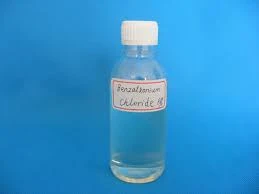pam flocculant
PAM Flocculant An Overview
Polyacrylamide (PAM) flocculant is an important chemical compound widely used in various industries for its effective flocculation properties. This polymer, created through the polymerization of acrylamide, has gained popularity due to its ability to aggregate suspended particles in liquids, thus facilitating sedimentation and clarification processes.
The flocculation process involves the clumping together of fine particles, which can include sediments, bacteria, and other contaminants, into larger aggregates or flocs. Once these particles have formed flocs, they can easily be separated from the liquid medium, either through sedimentation, filtration, or flotation. This capability makes PAM flocculant particularly useful in a variety of industries, including water treatment, mining, paper manufacturing, and oil recovery.
Mechanism of Action
The effectiveness of PAM flocculant can be attributed to its molecular structure and charge characteristics. PAM is a polyionic polymer, meaning it can carry positive or negative charges depending on its specific formulation. These charged properties enable PAM to interact with particles in suspension, neutralizing their charges and promoting agglomeration. The flocculant's long-chain molecular structure also increases the surface area for interaction, enhancing its ability to bind with particles and form strong, stable flocs.
In water treatment, for instance, PAM is utilized to remove impurities from wastewater. The application process typically involves adding PAM to wastewater streams, where it quickly disperses and begins to interact with suspended solids. The resulting flocs can then be easily removed from the water during subsequent treatment steps, leading to cleaner and clearer effluent.
Applications in Various Industries
1. Water Treatment The primary application of PAM flocculant is in municipal and industrial water treatment plants. By improving sedimentation rates, PAM significantly enhances the efficiency of operations aimed at producing clean water.
pam flocculant

2. Mining In the mining industry, PAM is used to assist with the recovery of valuable minerals from ore. The flocculant helps in separating solid particles during the coarse and fine processing stages, maximizing mineral yield and minimizing waste.
3. Paper Manufacturing PAM flocculant plays a crucial role in the paper production process, helping to thicken pulp and improve the retention of fibers and fillers. This leads to higher quality paper while reducing material losses.
4. Oil Recovery PAM is also utilized in enhanced oil recovery processes. It helps to improve the mobility of oil within porous rock formations, thus increasing the efficiency of oil extraction operations.
Environmental Considerations
While PAM flocculant is highly effective, there are important environmental considerations to take into account. The potential toxicity of residual acrylamide, a neurotoxin in certain concentrations, has raised concerns regarding its use in water treatment and other applications. Therefore, suppliers of PAM flocculants often offer formulations that minimize the levels of unreacted acrylamide, ensuring that the end products are safe for both human and environmental health.
Moreover, the biodegradability of PAM varies depending on the specific formulation. Many modern PAM products are designed to break down more readily in the environment, reducing the impact on ecosystems. It is crucial for industries to assess the environmental footprint of their chosen flocculant and to comply with regulations governing chemical use and discharge.
Conclusion
In summary, PAM flocculant is a versatile and powerful tool across multiple sectors, primarily due to its ability to facilitate the aggregation and removal of suspended particles in liquids. Its role in water treatment, mining, paper production, and oil recovery underscores its importance in promoting efficiency and effectiveness in industrial applications. However, as with any chemical used in large-scale applications, it is essential to consider the environmental implications and seek out formulations that adhere to safety standards. As technological advancements continue to enhance the performance and safety of PAM products, the future looks promising for this invaluable flocculant in both industrial and environmental contexts.
-
lk-319-special-scale-and-corrosion-inhibitor-for-steel-plants-advanced-solutions-for-industrial-water-systemsNewsAug.22,2025
-
flocculant-water-treatment-essential-chemical-solutions-for-purification-processesNewsAug.22,2025
-
isothiazolinones-versatile-microbial-control-agents-for-industrial-and-consumer-applicationsNewsAug.22,2025
-
scale-inhibitor-key-solutions-for-water-system-scale-preventionNewsAug.22,2025
-
organophosphonates-versatile-scale-inhibitors-for-industrial-water-systemsNewsAug.22,2025
-
scale-and-corrosion-inhibitor-essential-chemical-solutions-for-water-system-maintenanceNewsAug.22,2025





